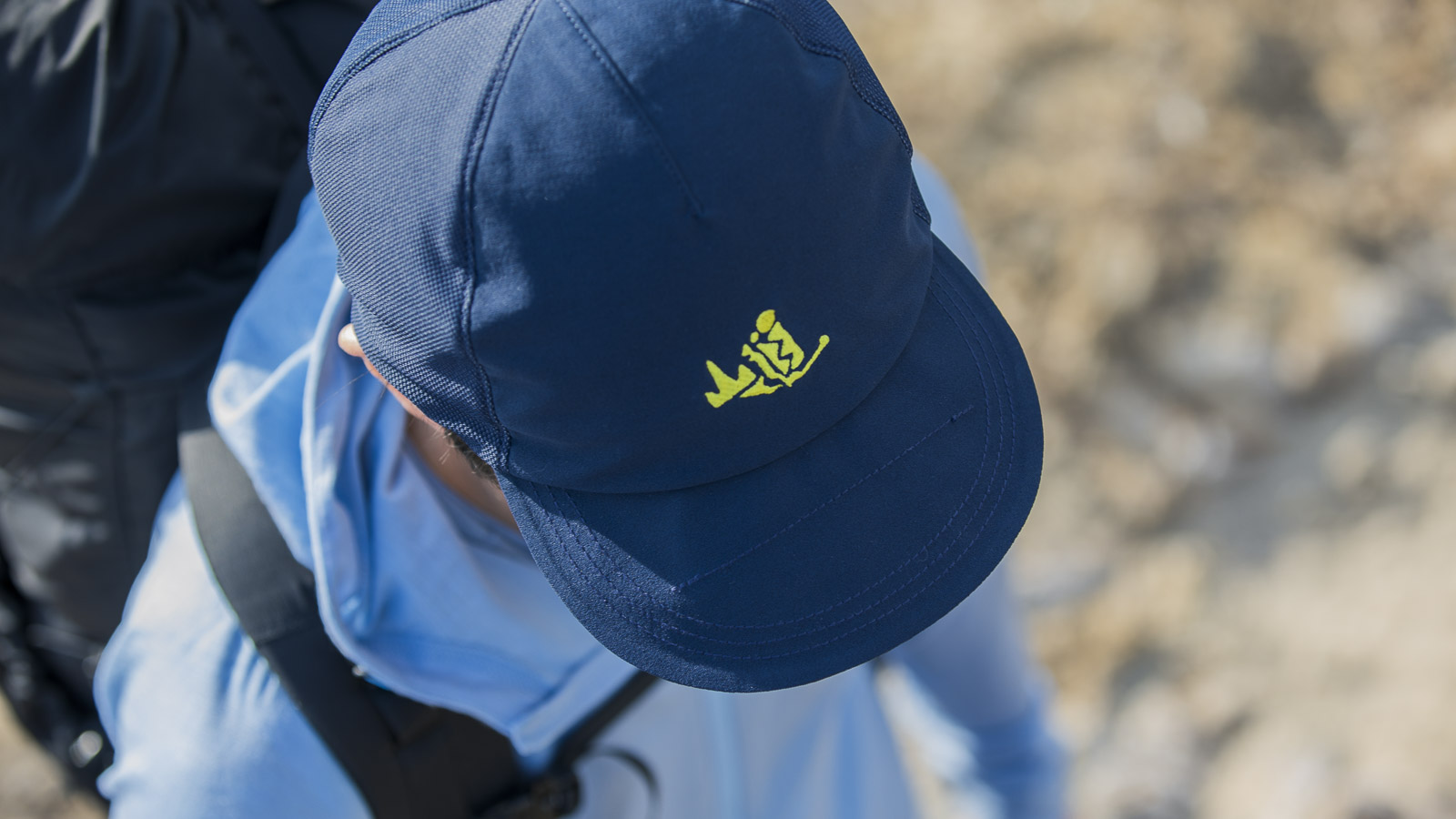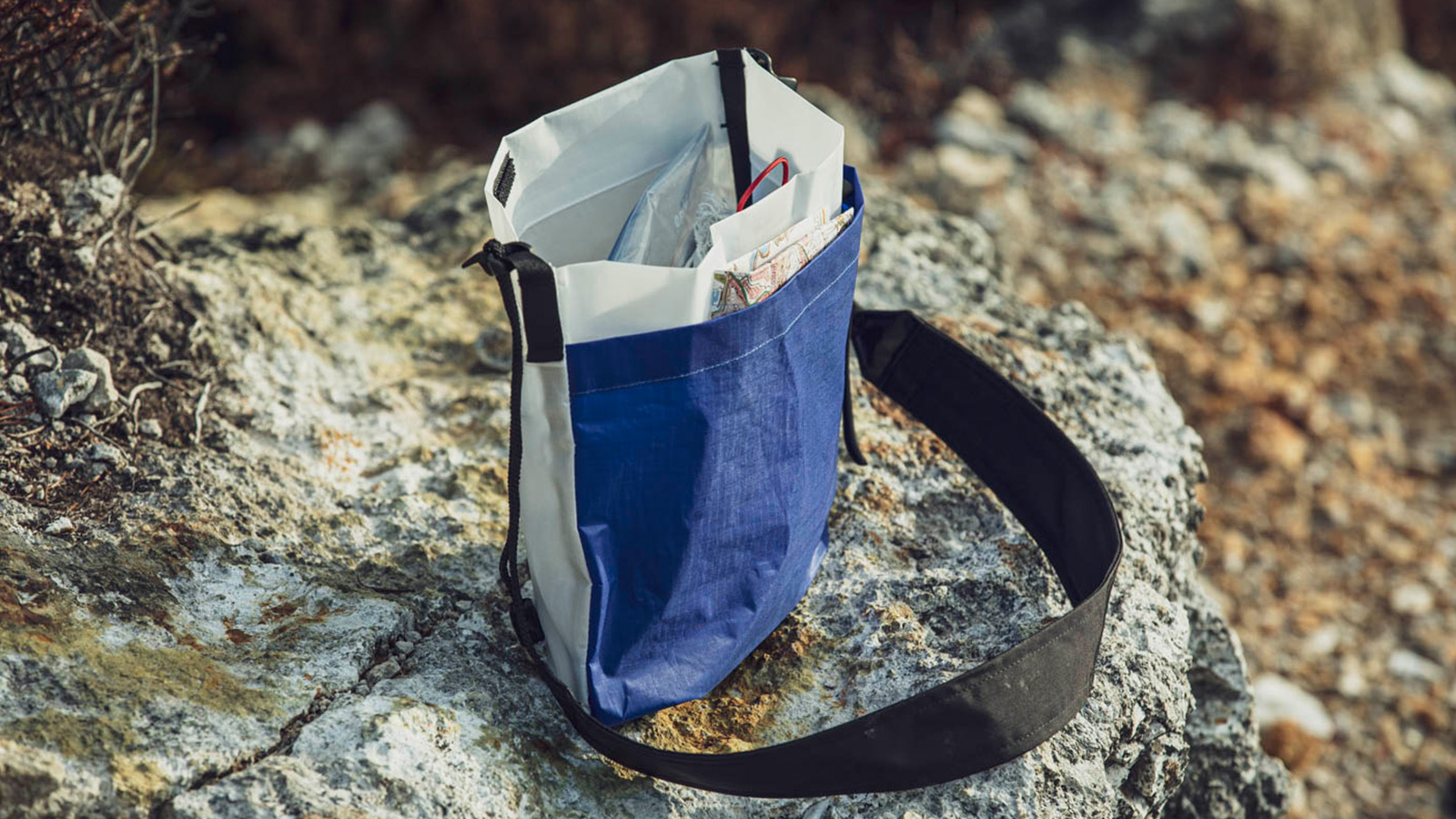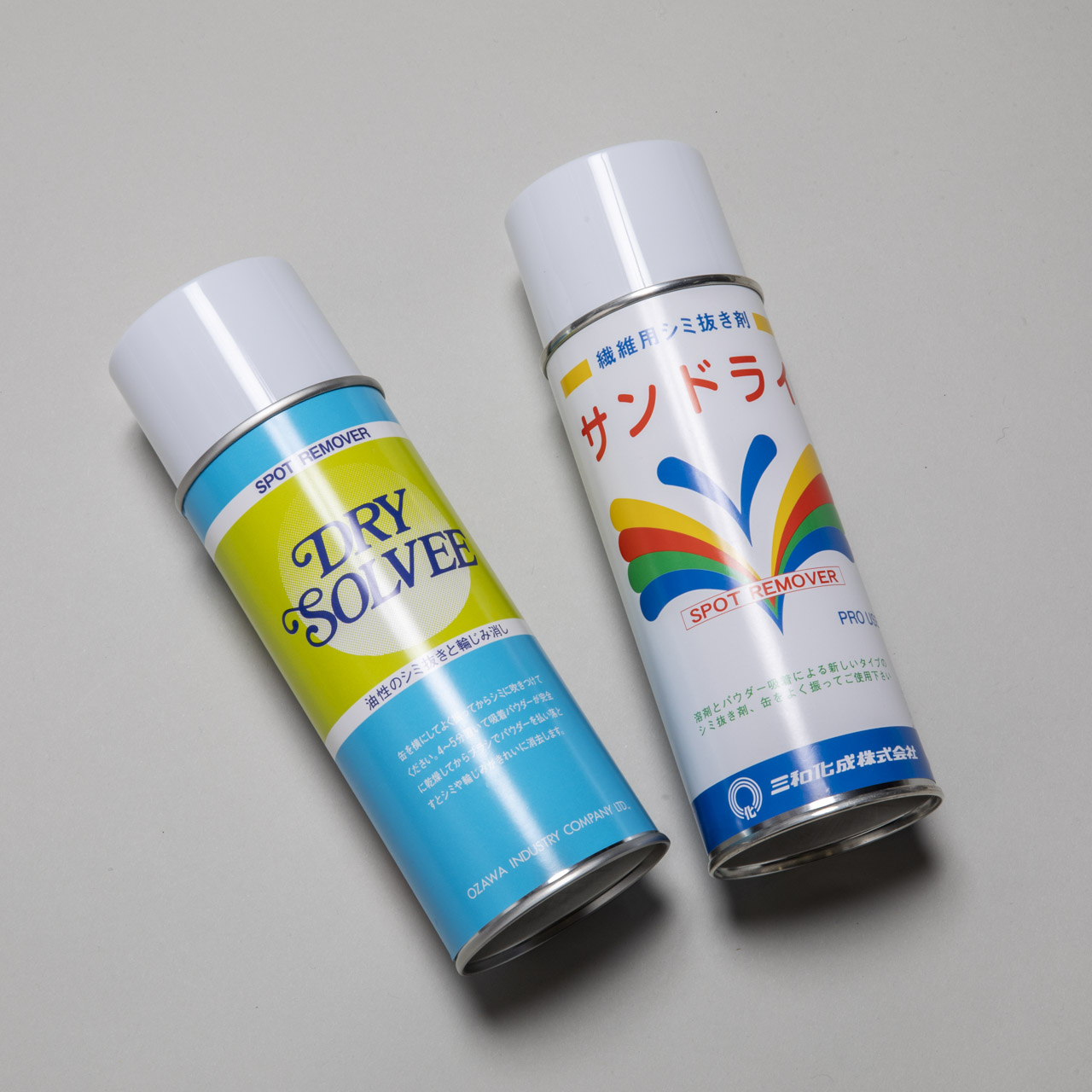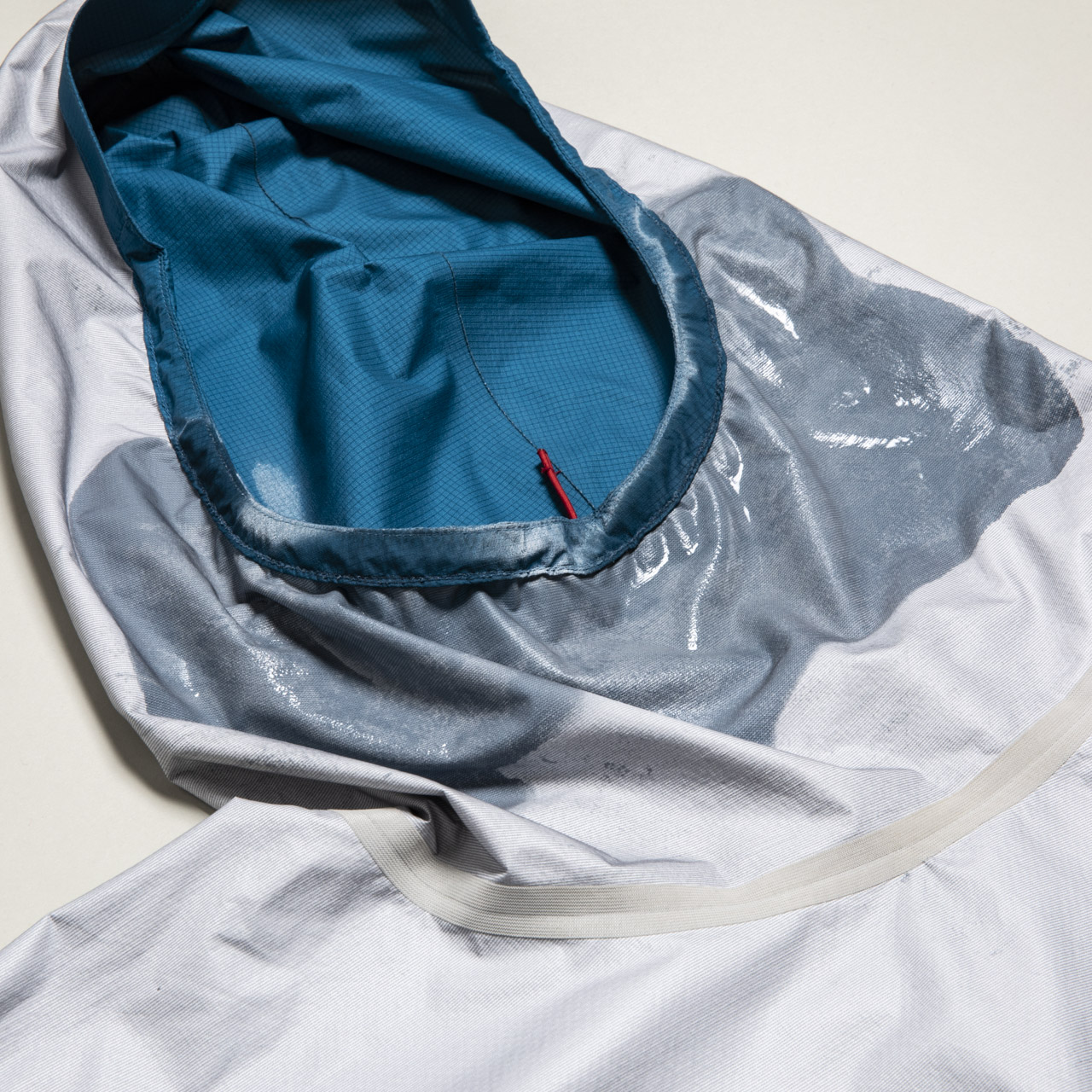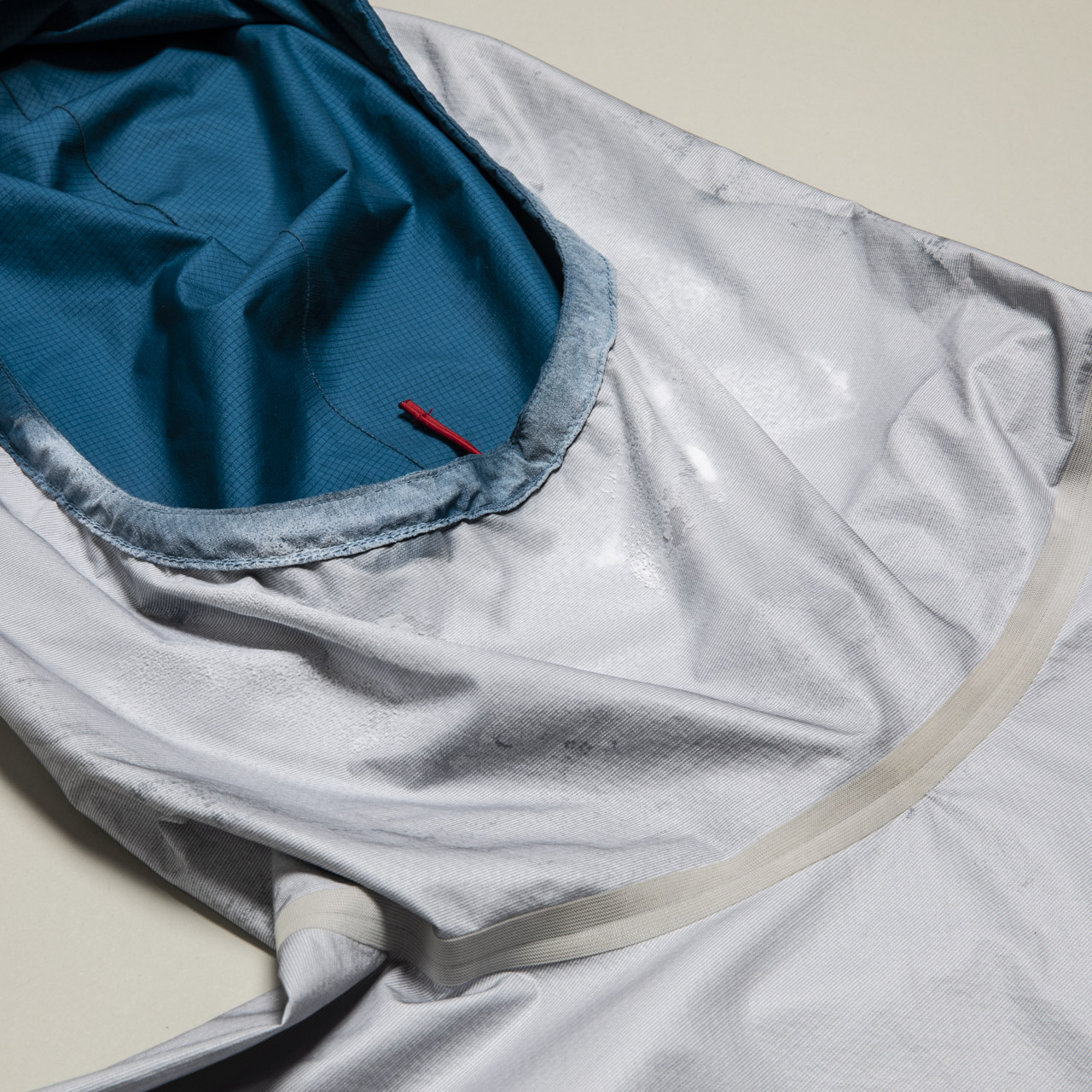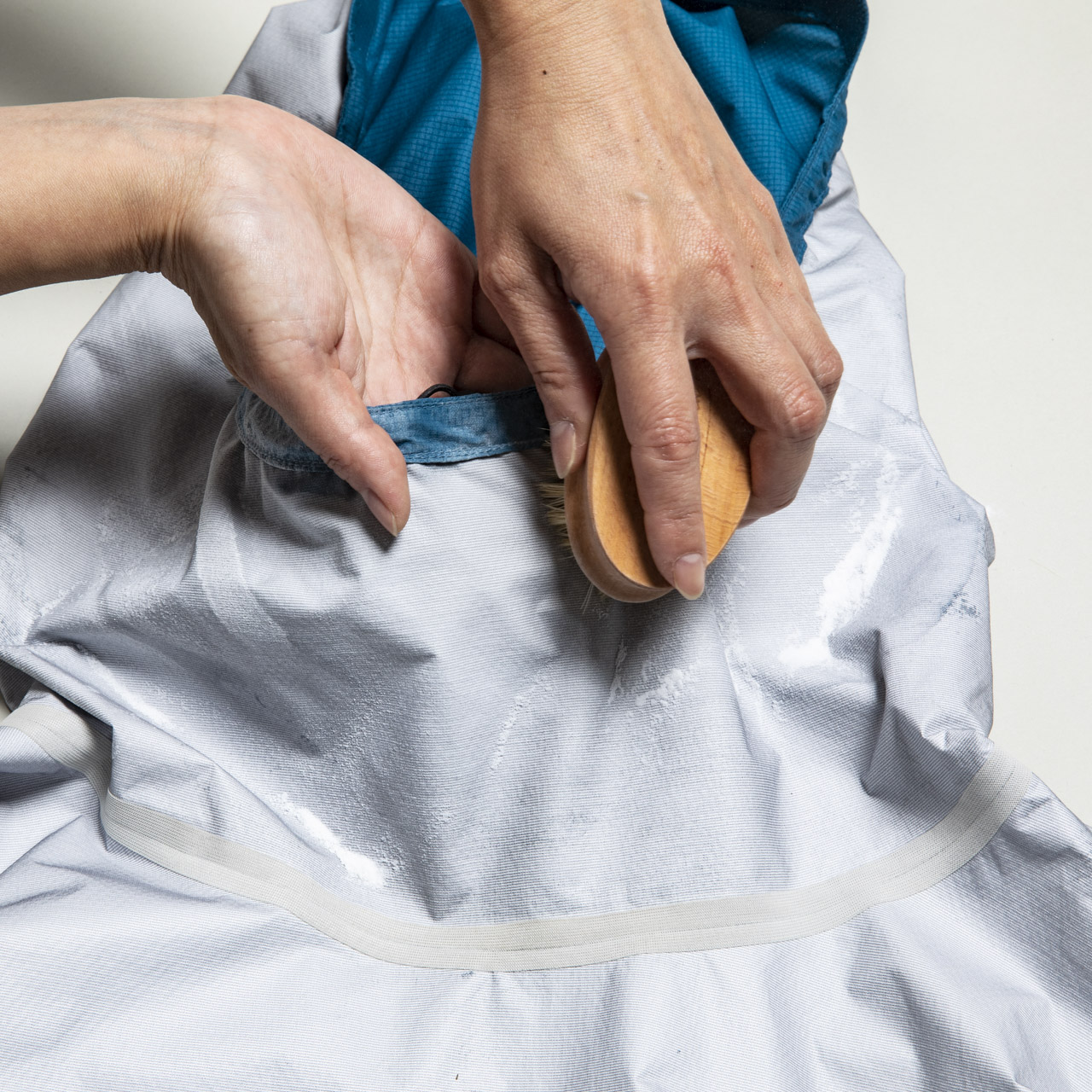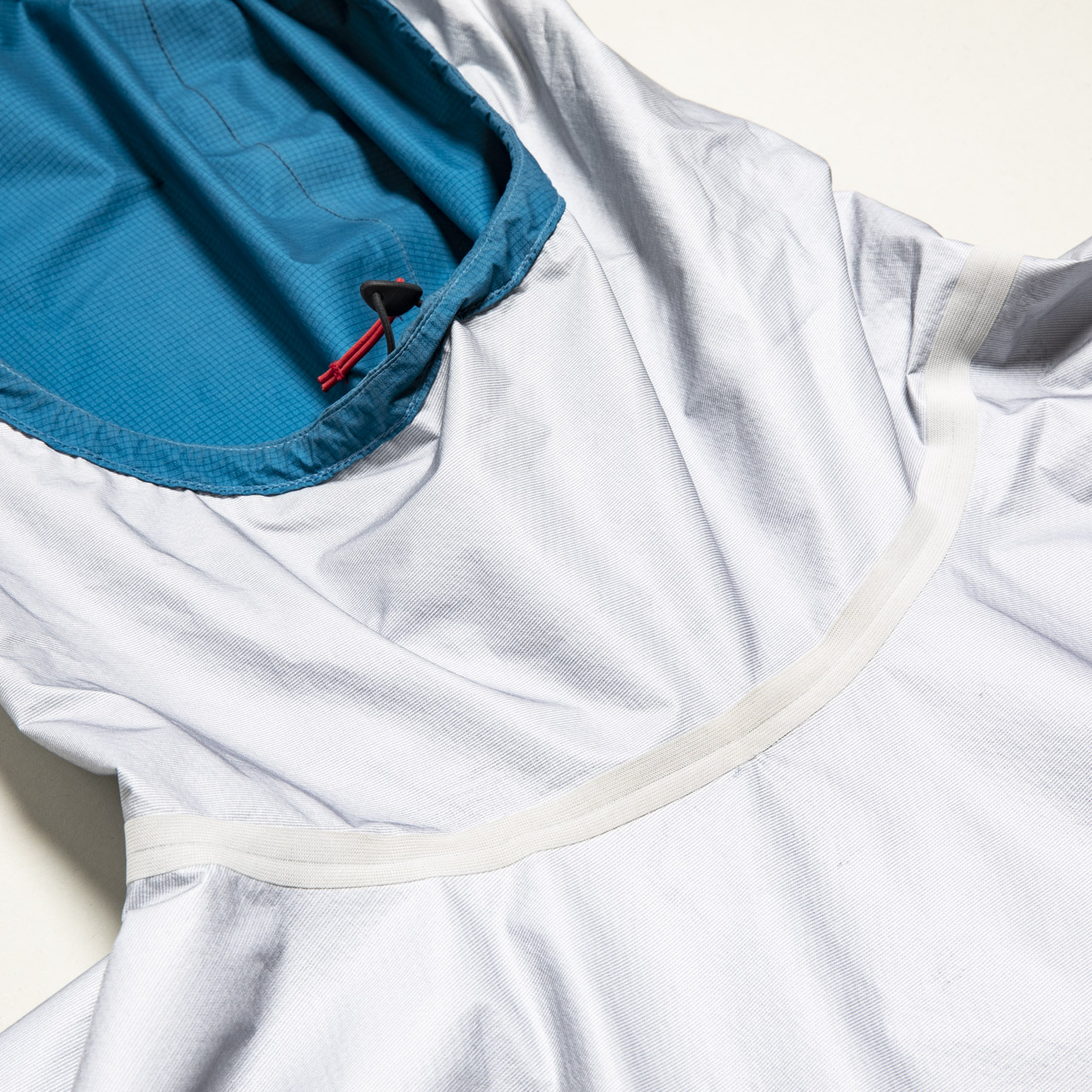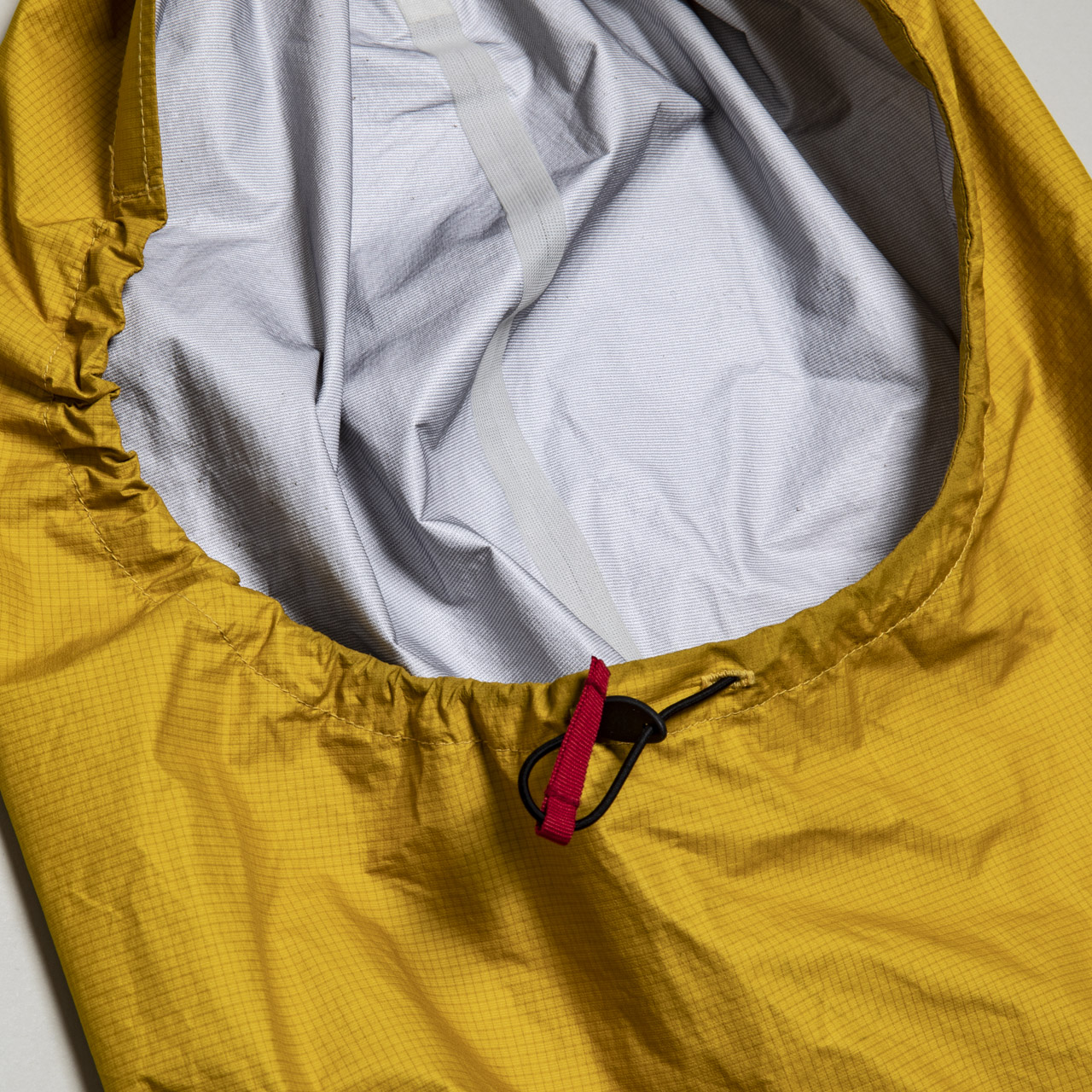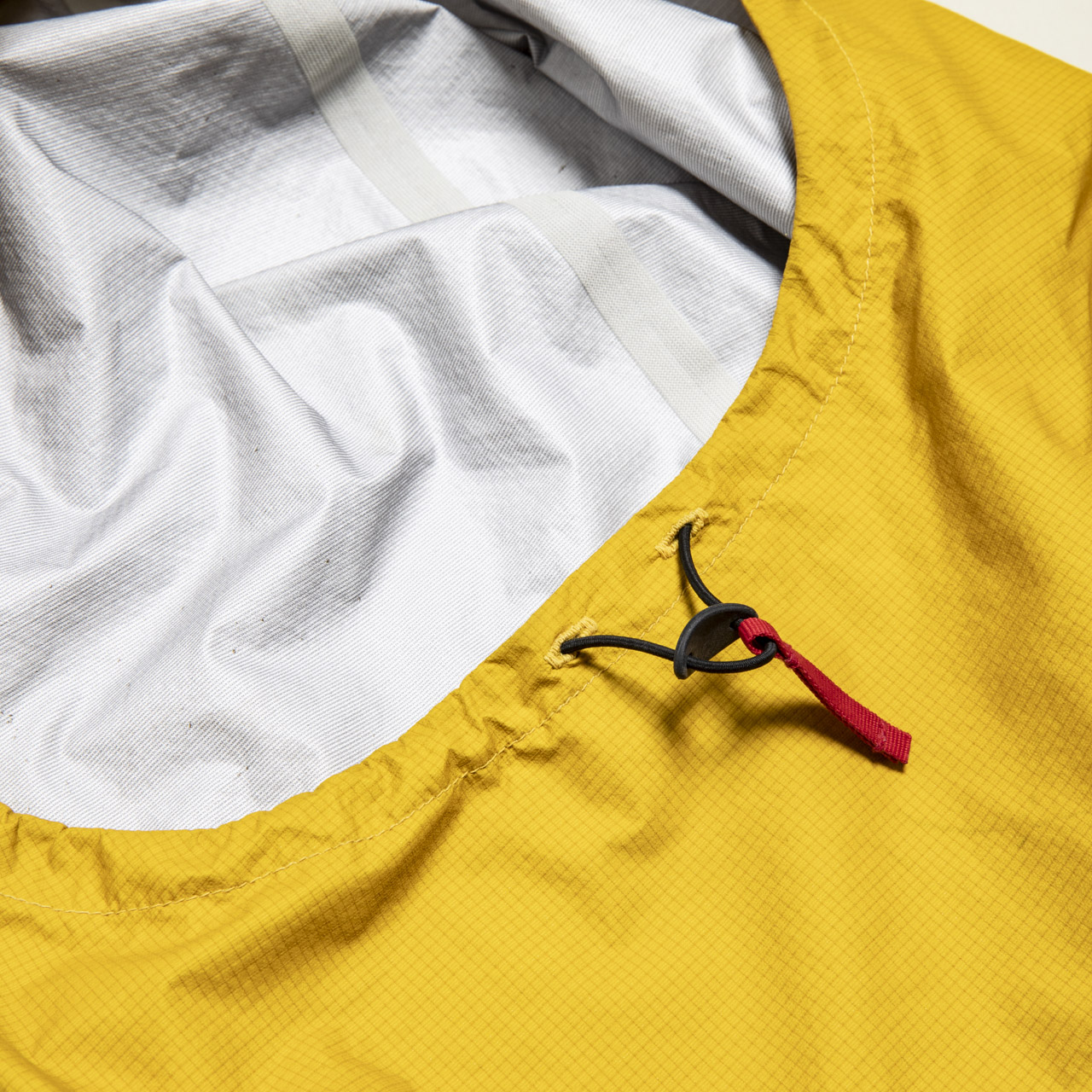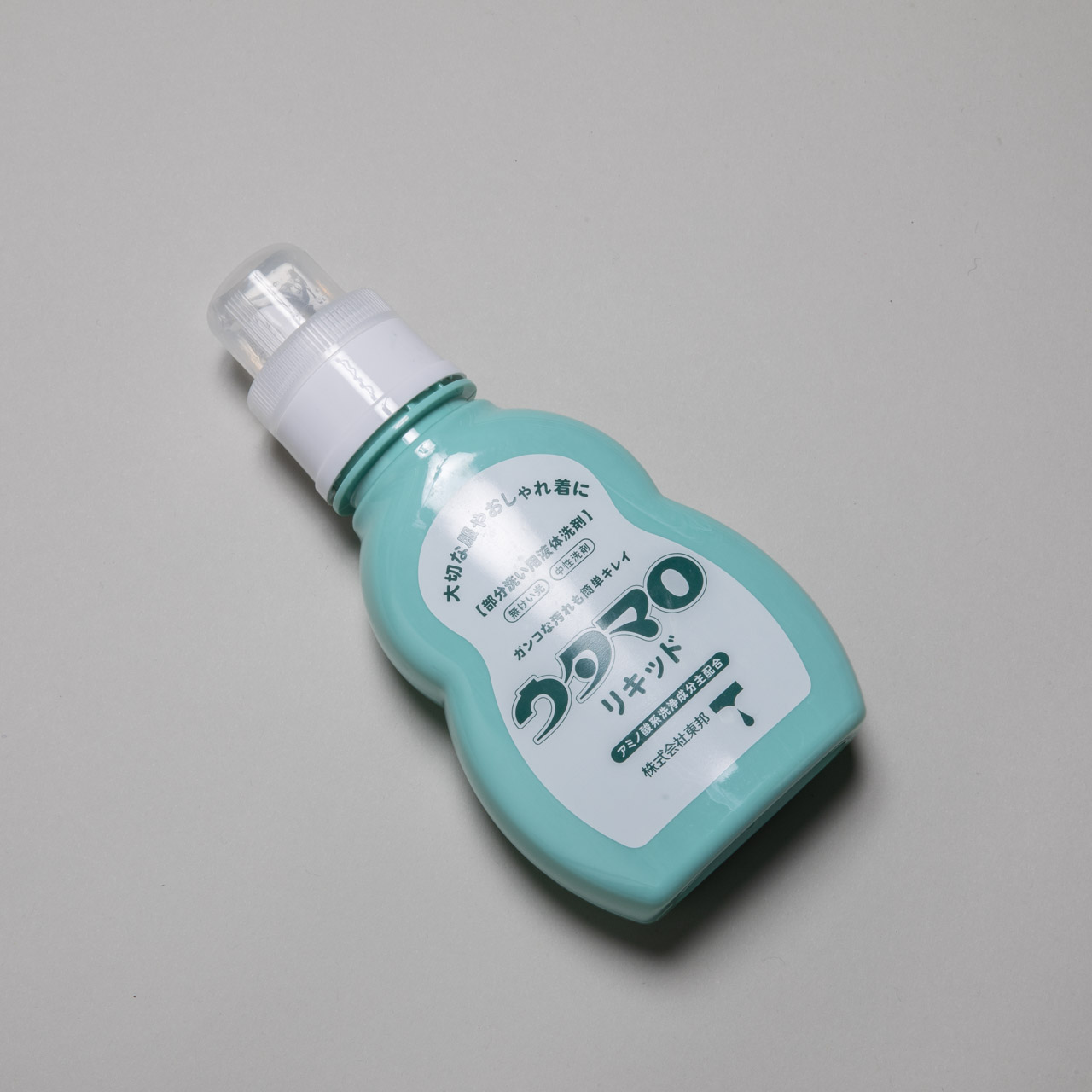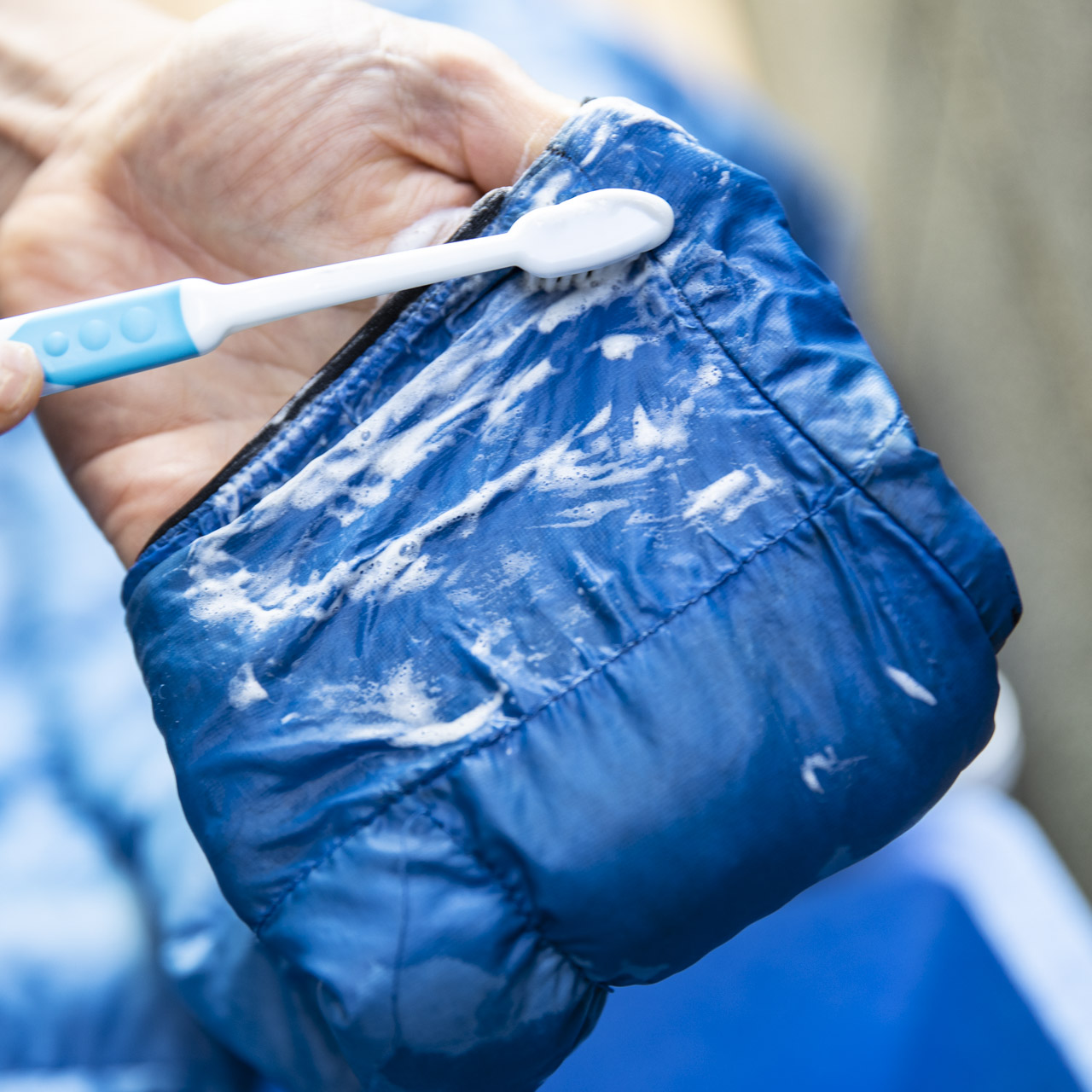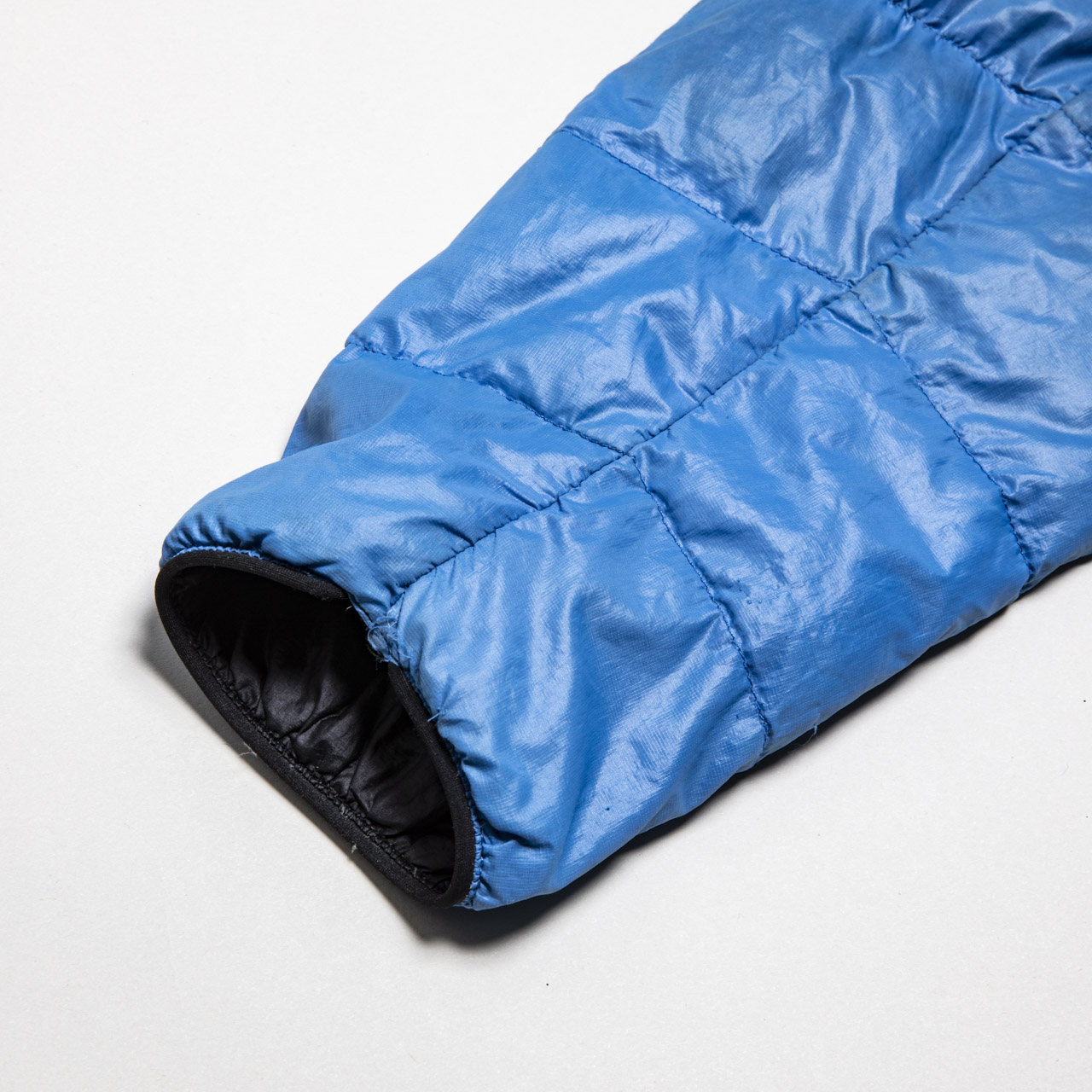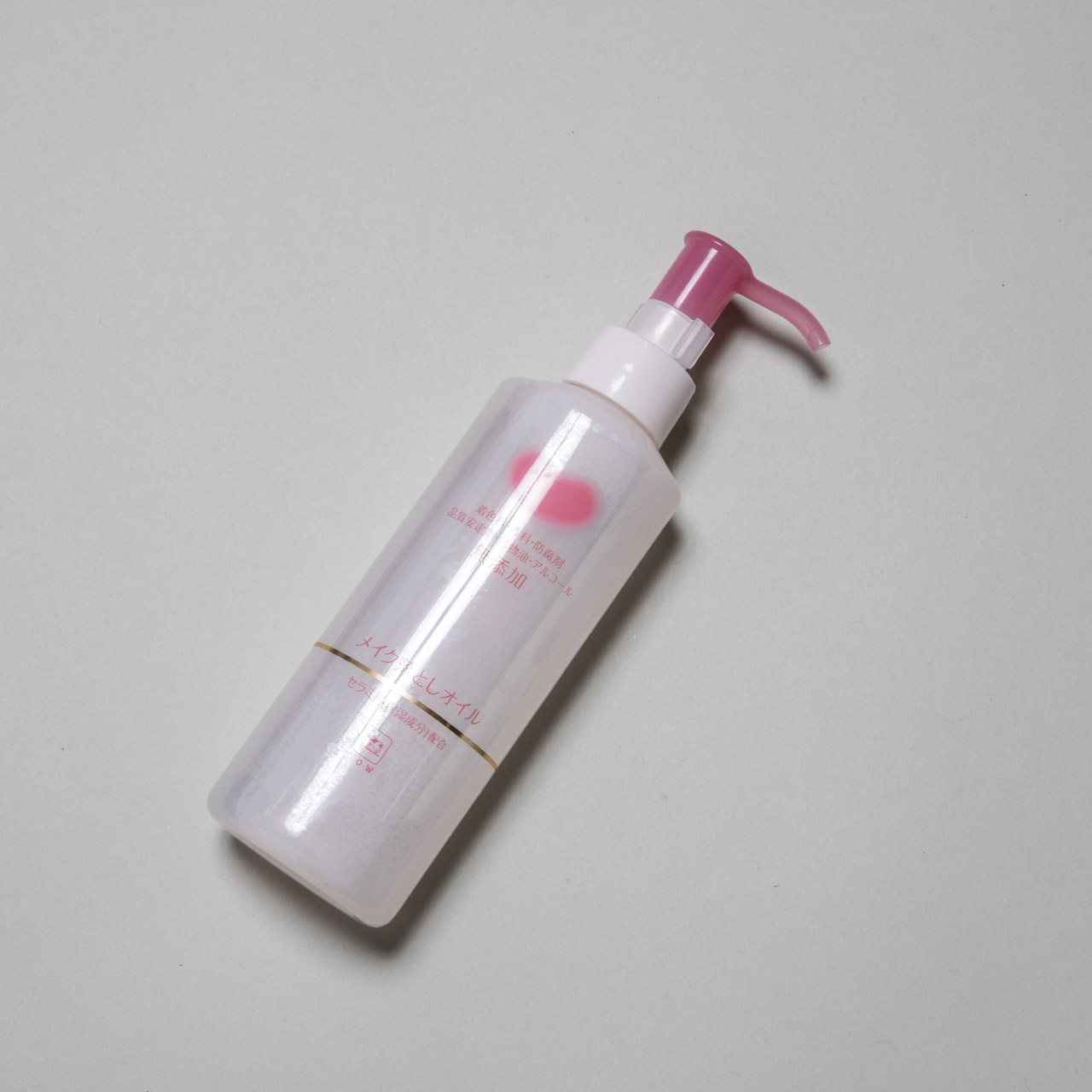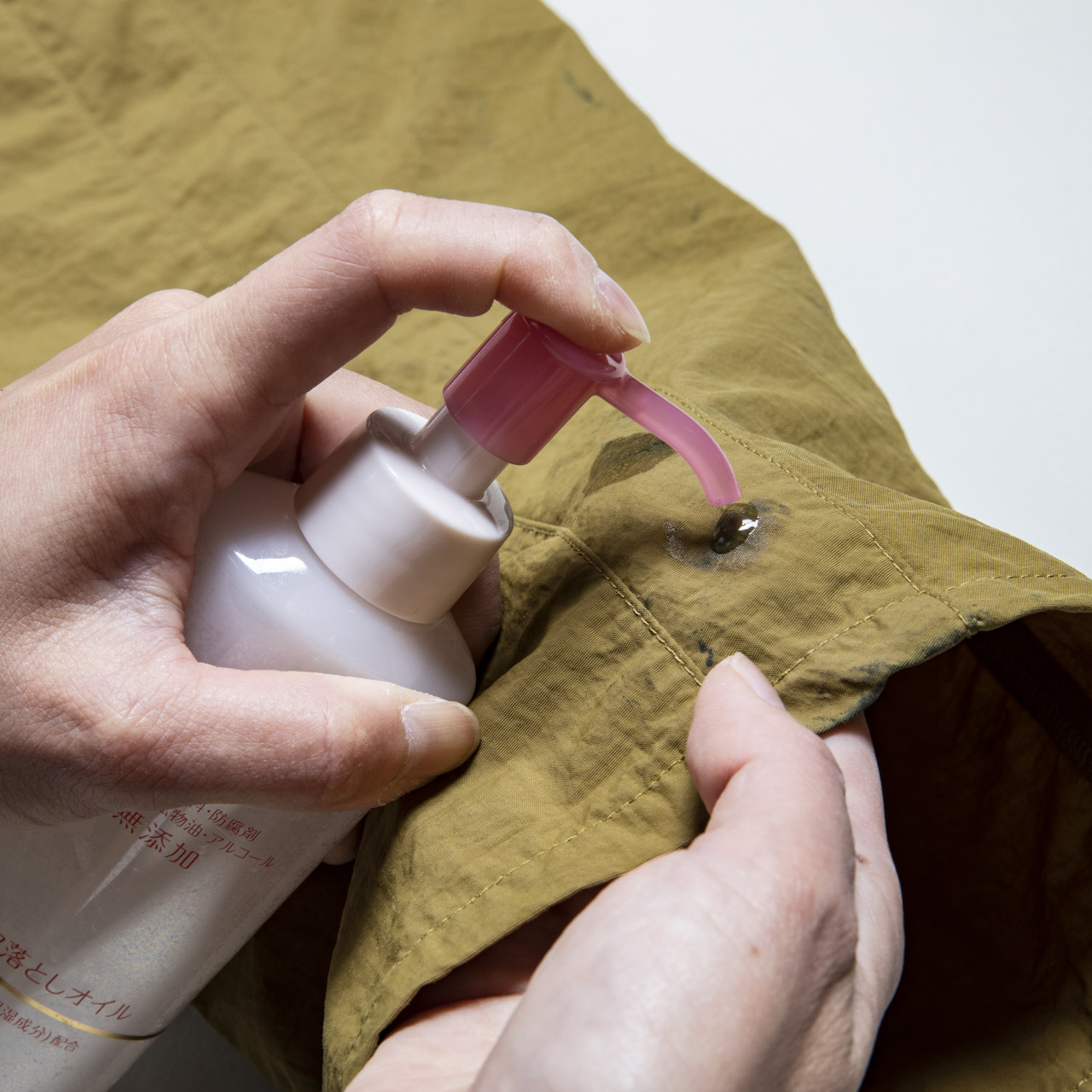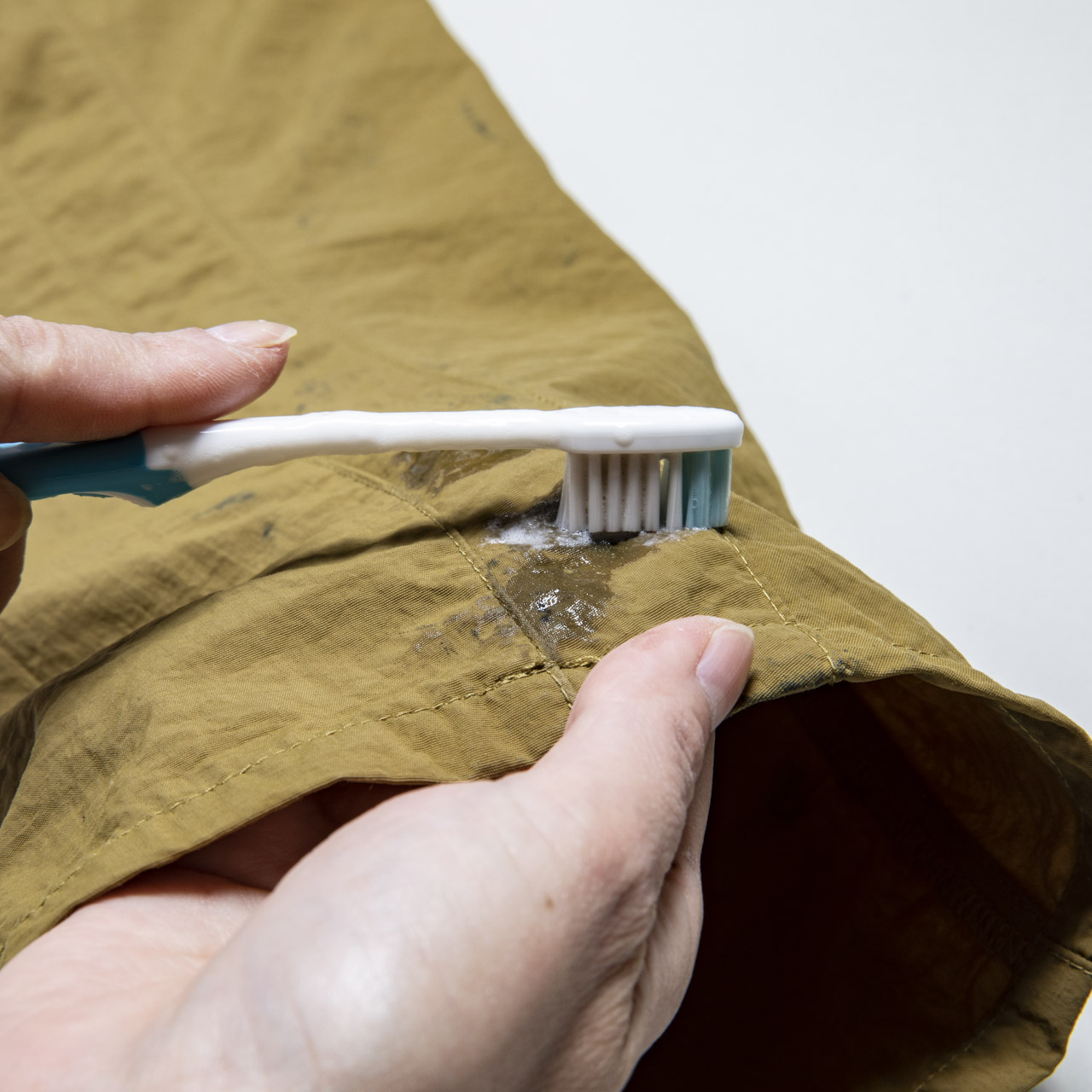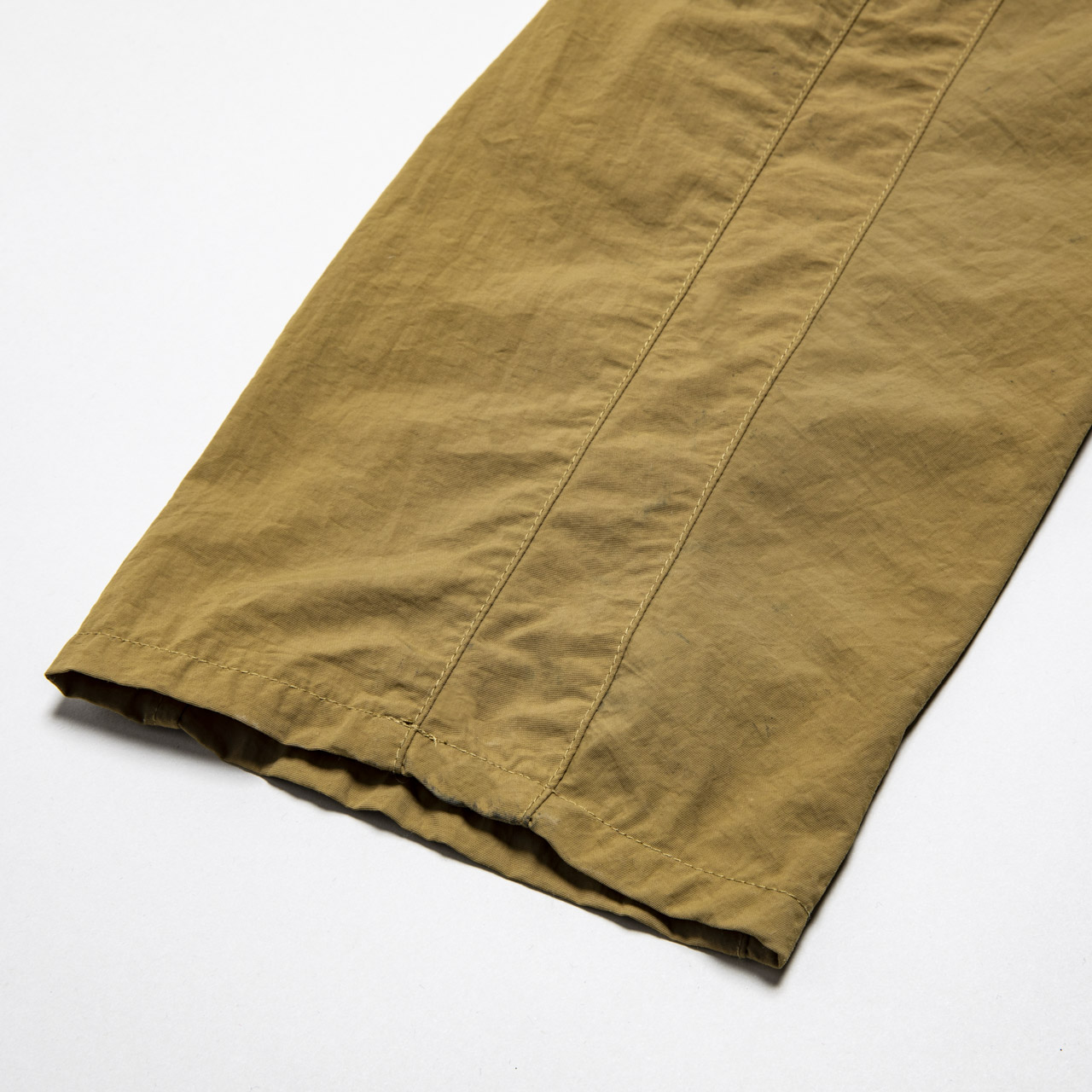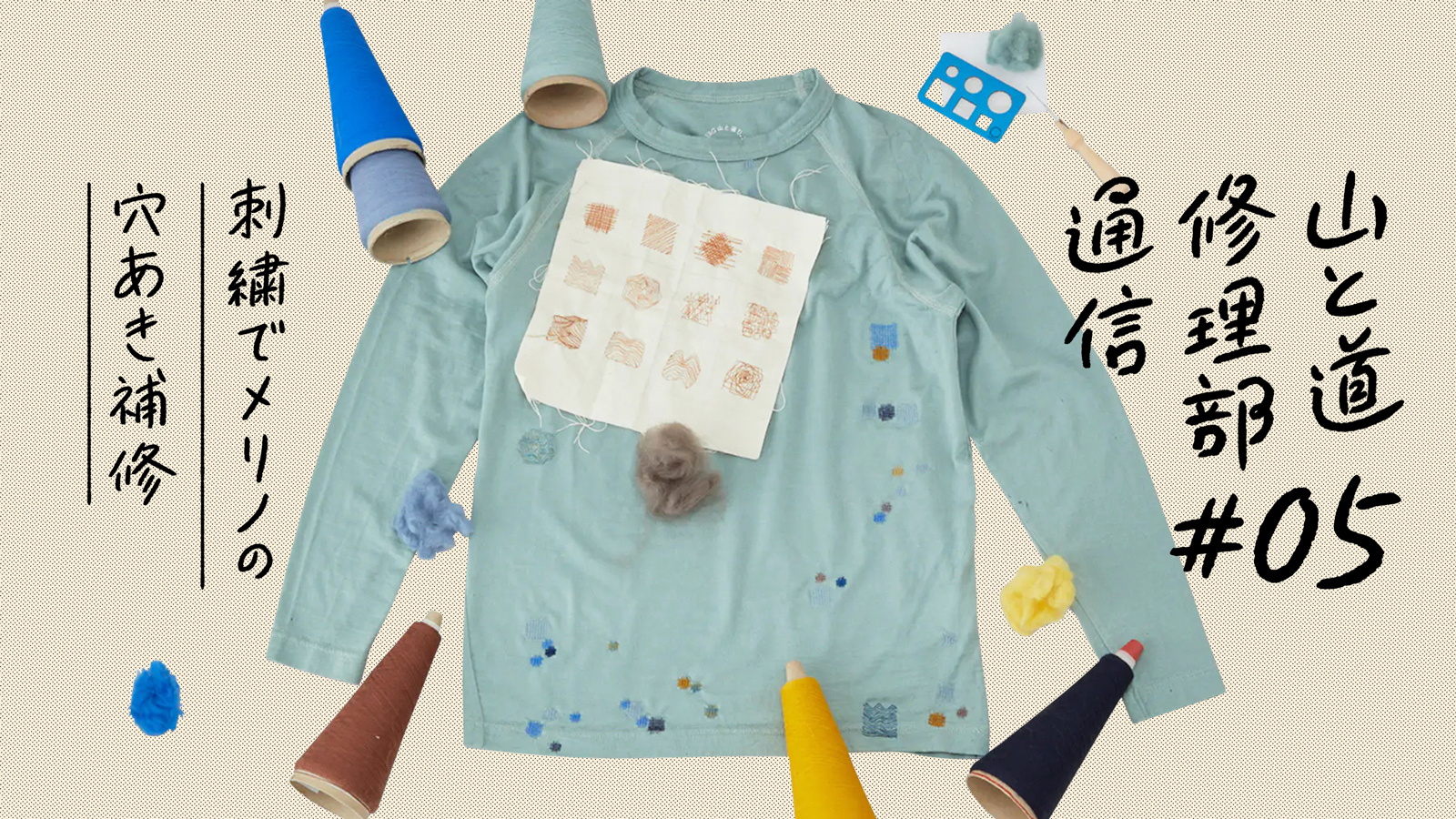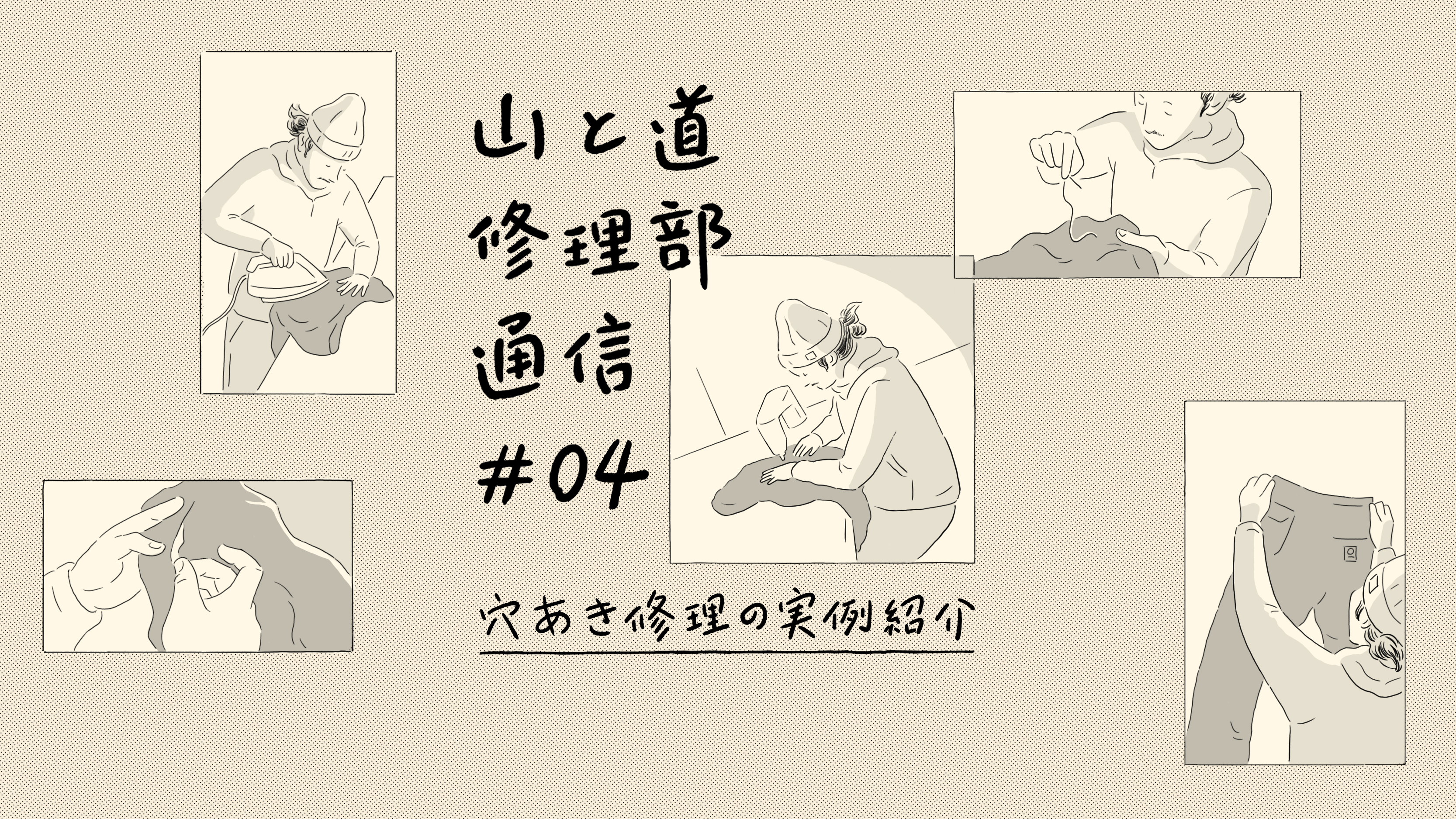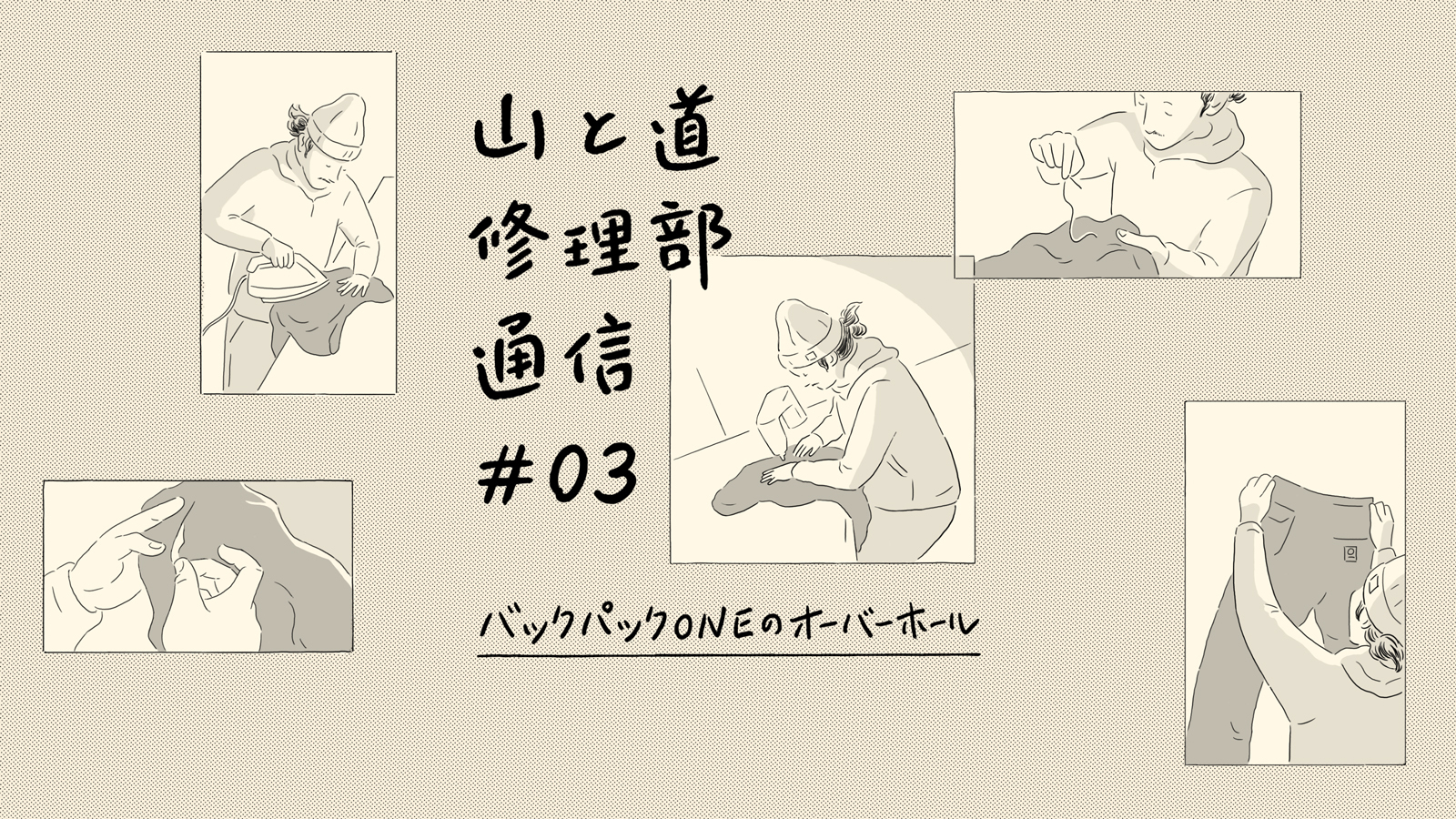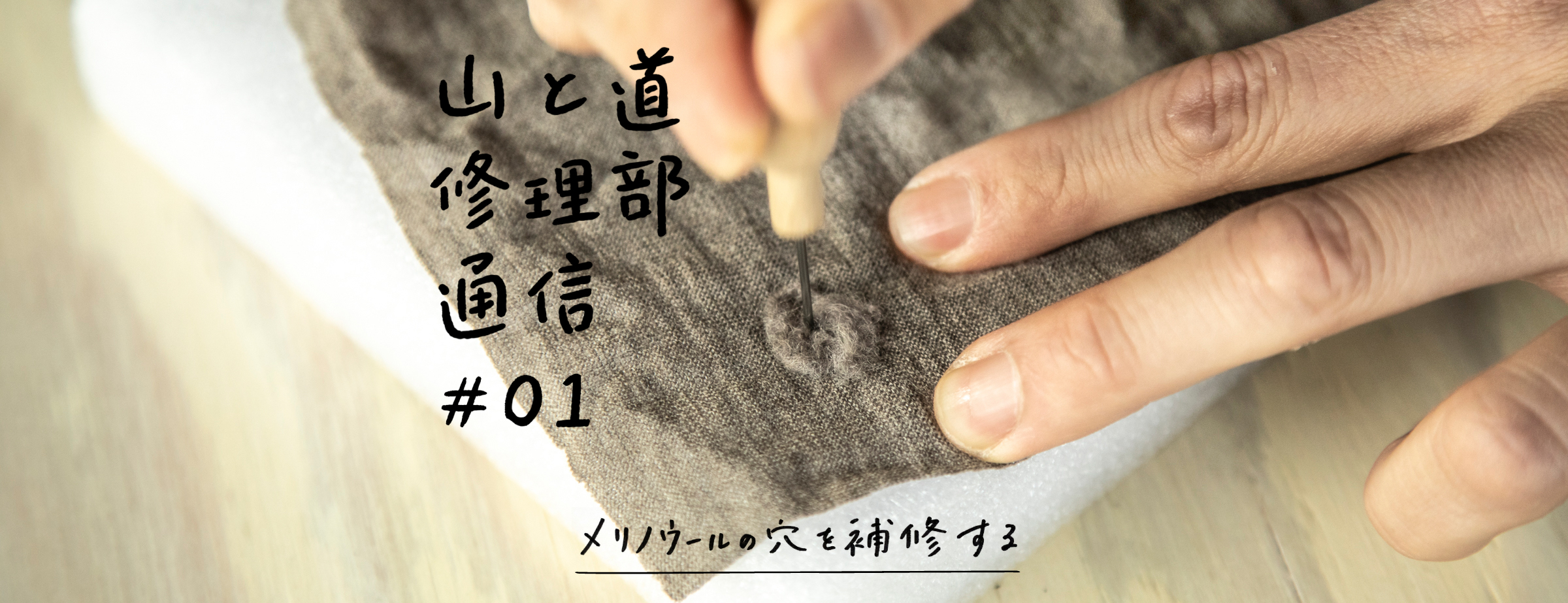#2 Removing stains from rainwear
Illustration: KOHBODY
Editor/Photographs: Masaaaki Mita
#2 Removing stains from rainwear
Illustration: KOHBODY
Editor/Photographs: Masaaaki Mita
The repair diary is a collection of repair and care methods we have aqquired over the years. The methods we introduce here can be done at the comforts of your home.
In this second issue, we will introduce methods for removing tough stains from waterproof breathable membranes and other nylon products. These stains often occur through sweating, sebum seeping in to the fabric, commonly seen around the cuffs and neck.
It might seem impossible to get out at glance, but is actually pretty simple to remove If you understand the mechanism of stains and deal with them appropriately.
The Yamatomichi Laboratory conducts all kinds of research, testing, and experiments, for materials, but I am mainly in charge of textiles.
Textiles, basically is “cloth,” but they come in a wide variety of threads, structures, coatings and other processes, and combinations with membranes. In recent years, functional materials have been developed using various technologies, further expanding the possibilities of gear. I always can’t wait to get my hands on new high tech materials for possible use in Yamatomichi!
In collaboration with the Repair Department, the lab also analyzes and inspects damage and stains on products for which customers have requested repairs. Many of these methods we introduce are from repair request by our customers.
Below we show how we removed Sabum stains and other types of stains from hydrophobic porous membrane jacket, the Yamatomichi UL Rain Hoody Pertex Pro (discontinued).
Rin MatsumotoTextile manager of Yamatomichi Laboratory
1. Removing stains in rainwear
A customer consulted us that when wearing the Yamamichi UL Rain Hoody Pertex Pro (discontinued), he had applied Vaseline to his skin to prevent chafing, and the applied area on the jacket had become stained and could not be removed even after washing.
When we looked at the actual garment, we could see a clear stain that had penetrated from the back side to the front side. We tried 1. washing by leaving the stain in warm water, which is said to be effective in removing oil and Sabum stains, 2. partial washing by applying detergent directly to the stain, and 3. washing at a dry cleaner, but the stain did not disappear.
Therefore, we decided to conduct research furthur on the matter. By figuring this out, we can remove and clean old products that was ruined by sabum stains after frequent use! (the darkening of the collar and cuffs of worn-out nylon products is thought to be caused by sebum in many cases).
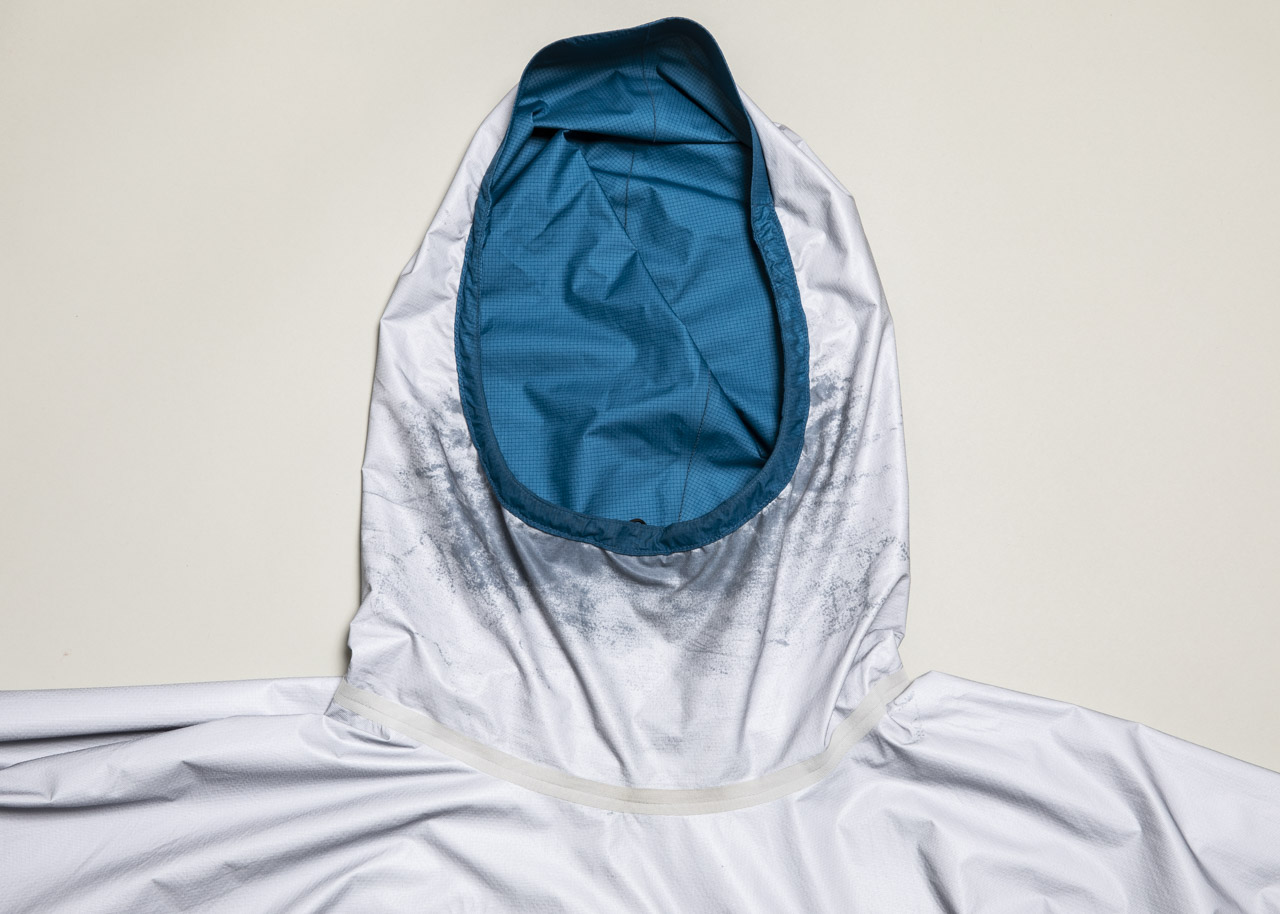
UL Rain Hoody Pertex Pro (discontinued) turned inside out.
Failed to remove after washing stains around the chin area and neck area.
Yamatomichi Laboratory Reseach
Pertex Shield Pro is a hydrophobic porous membrane made of polyurethane. Porous membranes have a mesh-like structure with numerous microscopic pores (holes) in the membrane. We have found that when oily creams or liquids such as Vaseline adhere to the membrane when worn, the oil or fat penetrates the microscopic pores and permeates through the membrane from the skin side to the outer fabric, causing stains. Pertex shield is very prone to this type of stain due to its 2 layer structure of membrane, exposed with no protective layer on the inside.
On the other hand, Pertex Shield is a hydrophilic non-porous membrane with no pores, so oil only adheres to the surface, and stains can be remedied with proper washing at home.
How do oily stains occur?
It has been confirmed that staining may occur due to adhesion to products containing oil and fat ingredients such as Vaseline, insect repellents such as icaridine and deet, and ethanol (hair creams, cosmetics, sunscreens, insect repellents, etc. are examples of such products).
Does stained spots lose its funtionality?
We tested the moisture permeability and water resistance performance of the original fabric and the fabric that had been stained with Vaseline at our testing laboratory. No significant change was observed in the water resistance, but the moisture permeability values were significantly reduced. It is thought that the pores that promote moisture permeability are blocked by the oil and grease, preventing moisture permeability. 1 to 2 cm stains are not expected to have a significant effect, but if the stains are extensive, breathability may be impaired when worn.
How to remove oily sebum stains
We also shared information with Mitsui Bussan Aifashion co. , distributor of the Pertex Shield pro, about the stains, and received information about “Dry Solvee” and “Sun Dry,” two professional-use (Japanese) stain removers, as a way to deal with the problem.
Dry “Solvee” and “Sun Dry” can be purchased over the counter (in-Japan) and often used in sewing factories where machine oil such as sewing machine oil tends to cause stains.
For oil and grease stains that cannot be removed by washing with general laundry detergent or kitchen detergent, by partial washing, or by washing at a dry cleaner, we recommend the use of these special oil and grease stain removers.
Will performance return after stain removal treatment?
After removing the stain the fabric was tested at testing facility. Comparing the breadthability with the Vaseline stained condition and after stain removal, the moisture permeability improved by about 30% after, but did not return to the original level. Since more Vaseline was applied for testing, depending on the amount of Vaseline adhered, more improvement could be expected, but even if the stain marks disappear completely, some oil components remain in the pores and the moisture permeability will not completely return.
Please understand the above and use your own judgment when proceeding with these methods
This article uses the Yamatomichi UL Rain as an example, but also applies to the Yamatomichi UL Rain Pants, which uses the same material.
2. Various stains; sebum and oil stains
We have also examined laundry care for various stains on nylon material wear, such as rainwear and down jackets, and will introduce them here.
Types of stains
There are three main categories of stains.
Oil stains
Sebum, machine oil, Vaseline, mayonnaise and other cooking oils
Water-soluble stains
Sweat, fruit juice, etc.
Insoluble stains
Sand, mud, metal powder, etc.
Of these, only water-soluble stains can usually be washed out with everyday methods, but oil stains and insoluble stains become stains are a different story.
In addition, stains may be a combination of factors 1-3. For example, stains from bicycle chain oil are not just oil stains; they are “oil stains + insoluble stains” because iron powder is mixed in with the oil. In the case of such stains, a two-step washing process is used, first removing the oil stain and then removing the insoluble stain caused by the iron particles.
We tried various of cleaning methods for using Yamatomichi staff members garments as examples. We hope you will find the following laundry care tips useful, using items you have at home or can obtain at a nearby drugstore. Please be sure to test the care on an inconspicuous area to make sure there is no color fading or discoloration.
Case 1: Downwear with discolored cuffs due to sebum and dirt
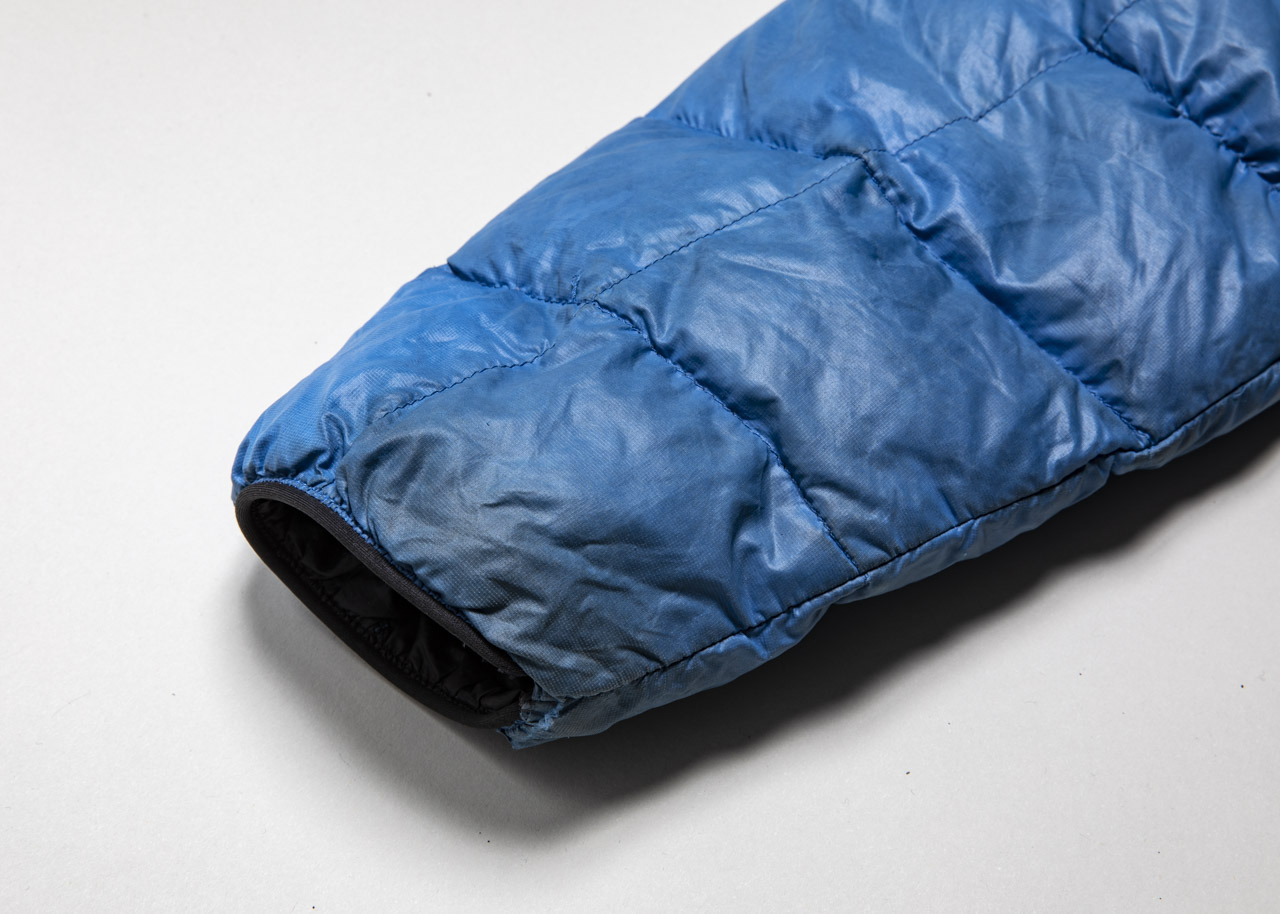
This is a phenomenon often seen in puffies and such. Where the cuffs, pocket area, collar, etc. have become darkened. Even washing and cleaning often do not improve this condition, and you may have garments that are worn less often due to these type of stains, even if they are functionally fine.
We tried partial washing with “Utamaro Soap,” which is highly rated by many households for its resistance to dirt and sebum.
Utamaro Soap contains a fluorescent bleach, so care must be taken when using it on colored fabrics, but Utamaro Liquid, a neutral detergent, is non-fluorescent and can be used safely on colored fabrics. This time, we applied “Utamaro Liquid” to the stained area and scrubbed it with a toothbrush to wash the area.
Case 2: Bicycle chain oil on 5-pocket pants
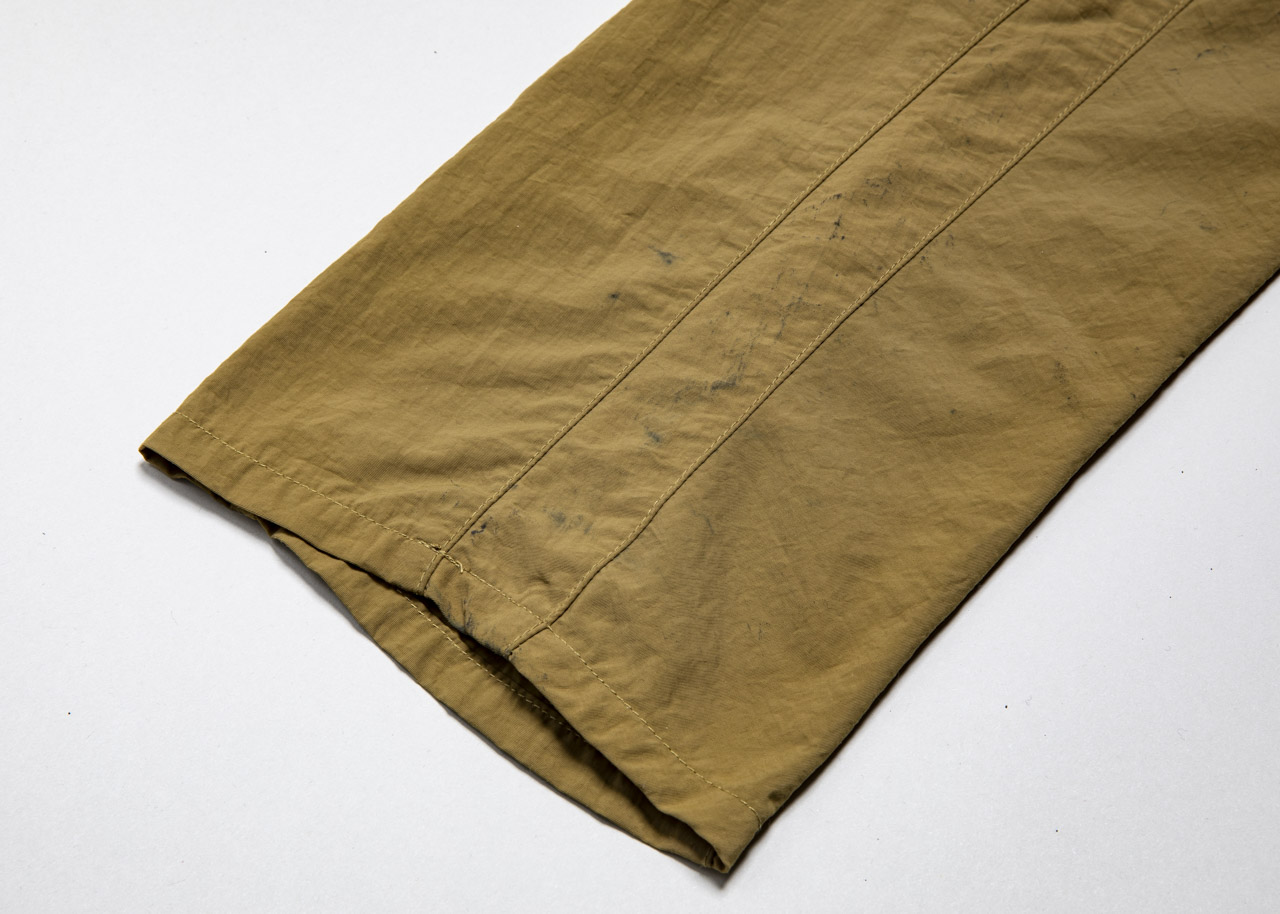
When riding a bicycle without a chain guard, chain lubricant often sticks to the hem of pants. Since the lubricant is mixed with iron powder and mud, it often does not come off even with the above-mentioned oil-based stain remover like “Utamaro soap,” and many people give up at this point.
Cleansing oil for makeup removal is actually very useful for such stains. First, the cleansing oil dissolves the oily dirt components derived from lubricating oil, and then the remaining dirt from iron powder, etc., can be scrubbed off with a toothbrush or similar tool.
Leaving the cleansing oil on the garment for a long time may cause new oil stains, so after treatment, remove the cleansing oil thoroughly with hot water of about 40°C (104°F), and then machine wash.
Conclusion
These are just a few examples of stain removal.
Once you understand how to care for stains according to their characteristics, you will be amazed at how even stubborn stains that you had previously given up on can be cleaned. Although laundry care is often thought of as a hassle, I was reminded once again that it is a profound and creative process.
We hope that you will enjoy the exhilarating feeling of cleanliness and revival through laundry care, and that you will use your favorite items for many years to come.

Repair Team
After graduating from highschool with a engineering degree, Ichiro’s career in craftsmanship started in a video equipment manufacturer. After that he worked as a pattern cutter for 11 years at a sewing factory that handledhandles various brands. During his search for a lifestyle closer to nature, he encountered Yamatomichi and was profoundly moved by its philosophy, that led him to embark on a new challenge in his life. He is currently in charge of repairs. He has a passion for craftsmanship and nature, and his dream is to achieve a complete self-sufficiency lifestyle someday.










